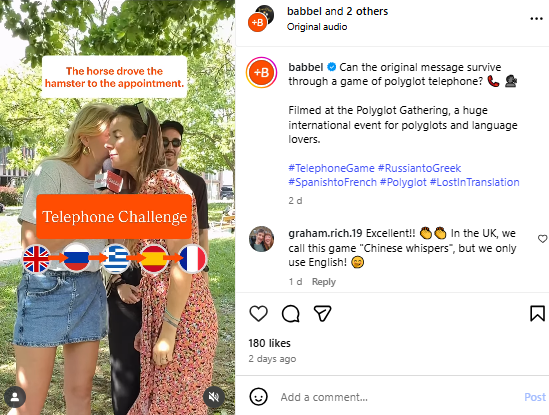
Thanks to the rise of online video, a potential customer has already watched something that shaped how they see your business before they speak to your team. A product demo, a social clip, or even a quick testimonial can influence their decision more than any ad copy ever could. In fact, testimonials drive 17% of conversions, with educational videos accounting for 16%.
However, the challenge isn't making videos, but creating video content that converts. That’s why a real strategy matters. You need to know what story to tell and where it needs to live so it actually reaches the right audience.
In this article, we explain how to build a video marketing plan for your brand. We cover the basics, challenges, solutions, examples, and more.
There's no denying that creativity is an integral part of video production, but it's not the only thing to focus on. That requires not treating video as a side project or something flashy to post on social media channels, but as a core part of your growth.
One of the biggest mistakes brands make is producing content without direction. Teams get excited about an idea, rush into production, and end up with a visually impressive piece that doesn't convert.
A proper video strategy is a must-have for any business. It's a clear plan that aligns creativity with intent to give the video a job to do. For example, a video may support a product launch, while another may drive awareness. With strategy, creativity becomes a tool for achieving measurable outcomes rather than a shot in the dark.
Suppose there are two brands in the same industry with different video production strategies. Duolingo and Babbel are good competitors for this example.
Babbel invests in its videos, but doesn't follow a particular strategy or tone. They have a few videos with views in millions, but others barely get a few thousand views despite their Instagram following of 400k+.

Duolingo takes that same level of quality, but builds a strategy around it. They do so by cutting shorter versions for different platforms and pairing content with calls to action. As a result, Duolingo has a massively popular social media presence with a library of content that continues to bring in loyalty and sales.

A strong video creative strategy has a purpose. It doesn't just focus on producing something visually striking but also explains why that content exists and what it should achieve. A strategy makes creativity intentional, directing it toward results that matter for the business.
The strongest strategies start by aligning business goals with creative decisions. If a company’s objective is to generate leads, the video needs to encourage viewers to take the next step.
Similarly, if the goal is brand recognition, the focus shifts toward consistent messaging and memorable storytelling. Every creative choice, from scripting to editing, connects back to the larger business direction.
The alignment also highlights the balance between emotional storytelling and measurable outcomes. Storytelling brings human connection, while strategy keeps these stories grounded in data-driven goals. An effective video creative strategy should account for these key elements:
When these elements come together, creativity stops being random and starts becoming repeatable. As a result, the videos you produce serve a purpose and contribute to measurable growth.
A video that looks polished isn’t automatically a video that works. The real difference comes from having a clear, actionable plan that ties creative choices to business outcomes.
Here's a step-by-step approach that turns video into one of your most effective growth tools.
Every video marketing plan needs certain objectives against which you can gauge its effectiveness. Too often, brands set vague goals such as “get more views.” While those sound positive, they don’t tell you if your efforts are actually driving an impact.
Instead, start with business objectives and work backwards:
For example, a software company might aim to increase free trial sign-ups by 20% over a quarter. That goal informs everything about the video plan, from messaging to calls-to-action.
Audiences rarely move from first exposure to purchase in a straight line. They pass through stages of awareness, consideration, and decision. A strong plan recognizes this journey and places video touchpoints along the way. Here's a video from HubSpot that teaches you how to make a customer journey map in an hour.
Create videos for the following stages of the marketing sales funnel:
Now, let's see how a fitness equipment brand would create videos for all these stages:
As you can see, each piece has a specific role. Together, these videos move people closer to action.
Format matters because different types of video work better at different stages. A good plan doesn’t lean on a single format. It mixes them based on audience needs and platform behavior.
Some of the most effective formats include:
For example, a SaaS brand launching new software could combine an explainer video for awareness, customer testimonials for consideration, and a demo walkthrough for the decision stage. They can further leverage short-form video strategy, based on insights from INDIRAP’s experts in this video.
No matter how creative a video looks, it fails if it doesn’t connect with audience motivations. The following questions can guide messaging:
For example, a travel brand trying to sell adventure tours shouldn’t just list destinations. Instead, it can tell stories of transformation, such as someone stepping outside their comfort zone and returning home with a new sense of confidence. The messaging ties directly to emotional outcomes while still driving bookings.
For your video to be seen, distribution should be an important aspect of your video marketing strategy. Video is mainly distributed across three main channels:
INDIRAP's video distribution and monetization playbook provides helpful tips for video distribution across channels. You can also reuse and repurpose content across platforms for a larger impact.
Content that converts doesn’t leave viewers wondering what to do next. Every video in your plan should guide the audience toward a specific step. That could mean signing up for a trial, making a purchase, and so on.
Ideally, the CTA should be direct and simple to follow. It should also match the stage of the funnel, whether it's awareness or decision. Make the action seamless without any complicated forms or extra steps, so that viewers don't have any trouble following it.
It’s tempting to judge success by likes or views, but those surface metrics don’t reveal true performance. A video with thousands of views but zero conversions is just entertainment. Instead, a video with fewer views but high conversion rates is far more valuable.
The video covers some important metrics you should measure for video marketing.
Track the following:
Let's say you run two different video ad creatives. One generates 50,000 views but only 100 sales. The other gets 10,000 views but 400 sales. The second video clearly aligns better with business goals, despite fewer views.
The strongest video marketing plans treat content as a living system. Data from one campaign should inform the next, and successful pieces should be repurposed for continued use.
To do that, you can repurpose long-form videos into shorter clips as social media content. Also, test different thumbnails, hooks, or CTAs to see what resonates most. More importantly, use insights from analytics to refine messaging for the next campaign.
.gif)
Even with a clear plan, many brands hit roadblocks that make video marketing feel less effective than it could be. Here are some challenges you should recognize and address early.
Small teams often struggle with budgets or production capacity. The solution isn’t always spending more, but spending smarter. Repurpose one long video into multiple shorter versions across platforms to stretch resources without diluting quality.
It’s easy to fall into the trap of chasing views or likes. The problem is that these numbers rarely reflect real impact.
Instead, you should connect video goals to business outcomes, like sales or sign-ups. When you track these metrics, success becomes tangible.
Audiences are constantly exposed to new videos, and many brands worry about standing out. The key is relevance. Instead of trying to be louder, focus on being more aligned with audience needs. A targeted animated explainer or Reel can outperform a flashy brand film if it speaks directly to what the viewer cares about.
For a video to really make an impact, it should be distributed correctly. However, teams often focus on production and overlook promotion. You can solve this by building distribution into the plan from the beginning, with a clear mix of organic, paid, and owned channels.
Different videos can sometimes feel disconnected from the brand’s larger identity. The fix is to anchor every piece in a central message and visual style, as consistency builds recognition and trust over time.
When it comes to measuring the success of your video content, the loudest or flashiest content doesn’t always hit the mark. Instead, it’s the creatives that align with your goals and connect to audience needs.
The real opportunity lies in creating content that converts. That means mapping your customer journey and choosing the right formats for each stage. Sometimes, in-house teams may fall short in this regard, and that’s where a video production agency steps in to help.
INDIRAP, as a specialized video marketing company, has helped numerous brands turn creative vision into real growth with done-for-you video production, social content, and paid distribution. Book a free, no-obligation Discovery Call today with our specialists to see how the right strategy can take your brand further.